The Many Identities of Ancient Agora of Athens

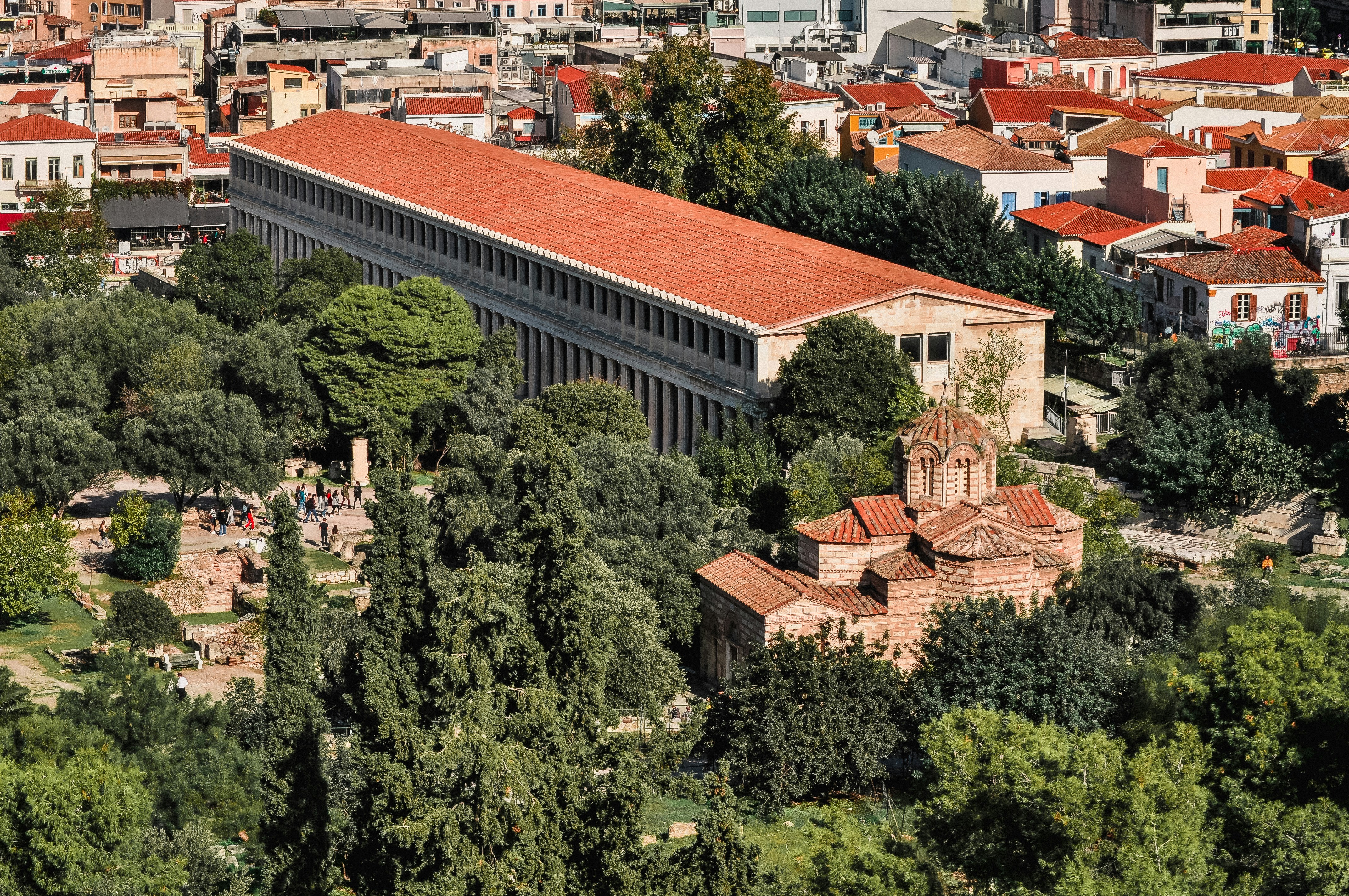
When most people think of the Ancient Agora of Athens, their minds immediately drift to the grandeur of the Classical Period — the time of Pericles, Socrates, and the birth of democracy. It’s easy to imagine the Agora as a place frozen in that golden age, a snapshot of Athens at its peak. But the truth is far richer and more complex. I can actually count at least five different historical periods that sourounds me when I walk the Panathenaic street crossing the Ancient Agora. Each one having it’s own identity.
In this post, I want to go a bit deeper into the multiple identities of the Agora, peeling back the layers, from its origins in the 6th century BCE through its transformation under Roman rule, and beyond. In some way, the Agora is a testament to the resilience and adaptability of Athens.
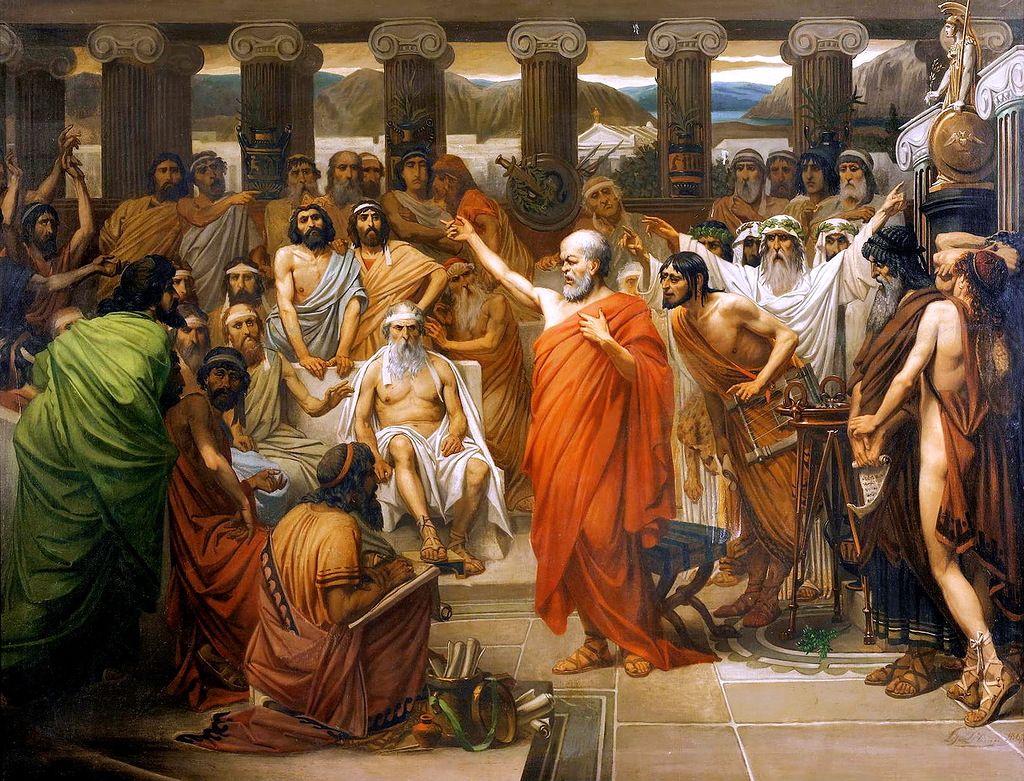
Classical Period (5th–4th century BCE): The Heart of Athenian Democracy
The Classical Period, spanning from the 5th to the 4th century BCE, is often regarded as the golden age of Athens, a time when the city-state flourished in terms of art, philosophy, and, most notably, democracy. This era was defined by the leadership of figures such as Pericles and the intellectual contributions of Socrates, Plato, and Aristotle. It was during this period that the Agora, the civic and commercial heart of Athens, reached its zenith as the epicenter of Athenian public life.
The Agora in the Classical Period was not just a marketplace; it was the beating heart of Athenian democracy. Here, citizens gathered to discuss politics, participate in judicial proceedings, and engage in philosophical debates. The Agora was a reflection of the Athenian ideal that all citizens should have a voice in the governance of the city. It was also a place of worship and social interaction, making it a microcosm of Athenian life.
1. Tholos: The Roundhouse of Democracy The Tholos was a round building that served as the headquarters for the fifty prytaneis (executive committee members) of the Athenian Boule (Council). These officials, chosen by lot, lived in the Tholos for a period of 36 days and were responsible for the day-to-day running of the government. The Tholos was an unusual circular structure, contrasting with the more common rectangular buildings of the period. Its roof was conical, and the building itself was supported by a central column. Inside, it housed a hearth where a perpetual fire burned, symbolizing the unity and continuity of the city-state. The Tholos was essential for maintaining the smooth functioning of the Athenian democracy. The prytaneis who resided there were on call 24 hours a day, ready to address any immediate concerns or emergencies that arose in the city.
2. The New Bouleuterion: The Seat of the Council The New Bouleuterion was the meeting place of the Boule, a council of 500 citizens who were responsible for preparing legislation to be voted on by the Assembly. This body played a crucial role in the functioning of Athenian democracy. Unlike the older Bouleuterion, this new structure was larger and more sophisticated, reflecting the growing complexity of Athenian governance. It had a seating arrangement that allowed all council members to see and hear each other clearly, facilitating debate and discussion. The New Bouleuterion was a symbol of the democratic process in Athens. It was here that the foundational debates and decisions that shaped the city-state were held, making it one of the most important buildings in the Agora.
3. Temple of Hephaestus (Hephaisteion): The Craftsman’s Sanctuary The Temple of Hephaestus, often mistakenly called the Theseion, was dedicated to Hephaestus, the god of metalworking, and Athena Ergane, the patroness of artisans. It served both as a place of worship and as a symbol of Athenian craftsmanship and industry. This Doric temple is one of the best-preserved ancient Greek temples. Its stunning friezes depict the labors of Heracles and the feats of Theseus, linking the city’s mythology with its daily life. The temple’s preservation is largely due to its conversion into a Christian church during the Byzantine period. The Hephaisteion was not just a religious center but also a celebration of the craftsmanship that fueled Athenian power. The artisans who worshipped here were the backbone of the city’s economy, producing the weapons, tools, and other goods that sustained Athenian society.
4. Stoa Poikile (Painted Stoa): The Birthplace of Stoicism The Stoa Poikile, or Painted Stoa, was a covered walkway adorned with paintings depicting famous battles, including the Battle of Marathon. It was here that Zeno of Citium taught his philosophy, which came to be known as Stoicism. The stoa was named for its richly decorated walls, which were a rarity in Athenian public buildings. The artwork was not just decorative but served to remind Athenians of their military prowess and civic pride. The Stoa Poikile was more than just a marketplace or meeting spot; it was a symbol of Athenian identity and resilience. The philosophy that originated here would go on to influence not just Athens but the entire Hellenistic world and later Roman thought.
5. Monument of the Eponymous Heroes: The Civic Bulletin Board The Monument of the Eponymous Heroes was a public notice board, where announcements and legal decrees were posted for the ten tribes of Athens. Each of the ten statues represented one of the tribes, providing a tangible connection between the citizens and their governance. This long, rectangular monument was adorned with the statues of the ten heroes after whom the tribes were named. It served as a focal point in the Agora, where citizens could stay informed about the latest legislative changes and public events. The monument was central to the daily life of Athenians, embodying the principles of transparency and participation that were crucial to their democracy. It was a place where the citizenry could gather to discuss and debate the latest news, fostering a sense of community and civic responsibility.
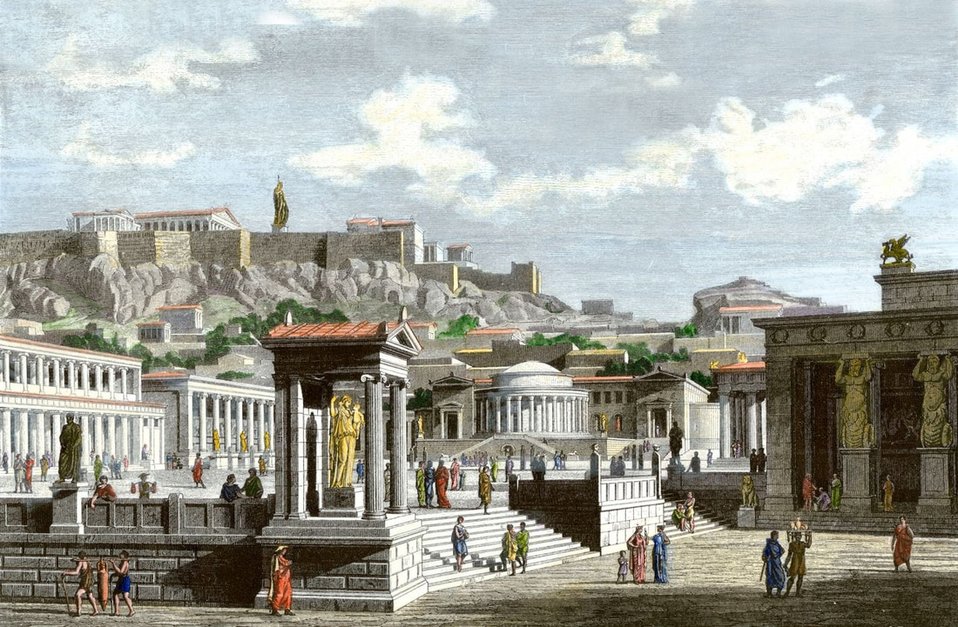
Hellenistic Period (323–31 BCE): A Time of Transition and Cultural Flourishing
The Hellenistic Period, following the conquests of Alexander the Great, was a time of significant cultural and political change across the Greek world, and the Athenian Agora was no exception. This era saw the expansion and transformation of the Agora, reflecting both the new influences brought by the wider Hellenistic world and the enduring legacy of Athens as a center of learning and culture.
During the Hellenistic Period, Athens, though no longer the dominant power in Greece, remained a significant cultural and intellectual hub. The Agora continued to be a vital public space, but it began to reflect the changing tastes and influences of the time. This period saw an influx of wealth and new ideas from the East, which influenced the architecture, art, and daily life in Athens. The Agora was transformed by new structures that were grander and more elaborate, embodying the cosmopolitan nature of the Hellenistic world.
1. Stoa of Attalos: A Gift from the East he Stoa of Attalos was a grand covered walkway built by King Attalos II of Pergamon as a gift to Athens. It served as a marketplace and a gathering place, much like the earlier stoas, but on a larger and more luxurious scale.
This two-story building, constructed of Pentelic marble and limestone, was an architectural marvel of its time. The ground floor featured a Doric colonnade on the exterior and an Ionic colonnade on the interior, while the upper floor had an Ionic exterior colonnade and a Pergamene interior colonnade, showcasing a blend of Greek and Eastern architectural styles.
The Stoa of Attalos symbolized the connection between Athens and the wider Hellenistic world. It was a place where citizens could engage in commerce, social interaction, and philosophical discussions, reflecting the vibrant cultural life of the period. Its reconstruction in the 20th century has made it one of the most iconic and well-preserved structures in the Agora today.
2. Middle Stoa: The Central Hub of the Agora The Middle Stoa, constructed in the 2nd century BCE, was the largest building in the Agora at the time. It served as a central gathering place and was likely used for various civic and commercial activities.
The Middle Stoa was a massive rectangular building with a colonnade running along its four sides. It was an open-air structure, providing a shaded space for Athenians to meet, conduct business, and discuss politics.
The Middle Stoa was central to the layout of the Hellenistic Agora, acting as a focal point around which other buildings were arranged. Its size and prominence reflect the continued importance of the Agora as a center of public life in Athens, even as the city adapted to the changing dynamics of the Hellenistic world.
3. South Stoa II: An Expansion of the Commercial Heart
South Stoa II was an extension of the original South Stoa, providing additional space for commercial activities in the Agora. It likely housed shops and offices, contributing to the economic life of the city.
This building was similar in style to the earlier South Stoa, with a long, narrow design and a series of rooms opening onto a colonnaded walkway. It was constructed using local materials, reflecting the practical and functional architecture of the period.
The expansion of the South Stoa during the Hellenistic Period underscores the growing commercial activity in Athens. As the city continued to attract traders and merchants from across the Hellenistic world, the Agora remained the economic heart of Athens, facilitating the exchange of goods, ideas, and culture.
4. The Temple of Apollo Patroos: A Sanctuary in the Heart of the Agora
The Temple of Apollo Patroos was dedicated to Apollo, the patron god of the Ionian Greeks. It served as a place of worship and a reminder of the city’s religious heritage and its connection to the wider Greek world.
This small but elegant temple was built in the Ionic order and featured a single colonnade at the front. It housed a cult statue of Apollo, symbolizing the divine protection over the city and its people.
The Temple of Apollo Patroos highlighted the continued religious significance of the Agora during the Hellenistic Period. It was a place where citizens could honor their gods, seeking their favor and protection in a rapidly changing world.
5. Altar of Zeus Agoraios: A Testament to Civic Religion
The Altar of Zeus Agoraios was dedicated to Zeus, the king of the gods and protector of the Agora. It was a focal point for public sacrifices and religious ceremonies, reinforcing the Agora’s role as a center of civic religion.
This modest altar was constructed in a simple, functional style, reflecting its purpose as a site for public rituals rather than a grand monument.
The Altar of Zeus Agoraios was integral to the religious life of the Agora, serving as a reminder of the divine forces that Athenians believed governed their city. It was a place where the community could come together to honor Zeus and seek his blessings for the well-being of Athens.
Roman Period (31 BCE – 3rd Century CE): The Agora Under Roman Influence
The Roman Period marked a significant transformation for the Athenian Agora, as it became increasingly influenced by Roman culture and politics. While the Agora retained its Greek essence, new buildings and structures were introduced, reflecting the power and influence of Rome over Athens. This era saw both the enhancement of existing structures and the introduction of new ones that catered to the changing needs and tastes of the time.
As Rome extended its dominance over Greece, Athens found itself under Roman rule, yet it continued to be revered as the cradle of philosophy and learning. The Roman Period in the Agora was characterized by a blend of Greek and Roman architectural styles and functions. The Romans, who admired Greek culture, sought to leave their mark on Athens, while also preserving the city’s rich heritage. The Agora, therefore, became a fusion of Athenian tradition and Roman innovation.
1. Odeon of Agrippa: A Monument to Roman Patronage The Odeon of Agrippa was a grand concert hall and meeting place, donated by Marcus Vipsanius Agrippa, a close associate of Emperor Augustus. It was used for musical performances, lectures, and other cultural events, symbolizing the Roman appreciation for Greek arts and culture. The Odeon was a large, rectangular building with a semi-circular orchestra and tiered seating. It featured a grand facade with Corinthian columns, reflecting the Roman influence on Athenian architecture. The roof was supported by massive statues of giants and tritons, adding a dramatic flair to the structure. The Odeon of Agrippa was a centerpiece of Roman Athens, embodying the cultural patronage of the Roman elite. It served as a venue where Athenians and Romans alike could enjoy the arts, further solidifying Athens’ status as a cultural capital under Roman rule.
2. Roman Agora: A New Commercial Hub The Roman Agora was constructed to the east of the original Greek Agora, serving as a new commercial center. It was built by the Romans to streamline the marketplace, moving much of the commercial activity from the older Agora. The Roman Agora was a rectangular courtyard surrounded by stoas (covered walkways) and shops. It featured a monumental gateway, known as the Gate of Athena Archegetis, which was adorned with Corinthian columns and dedicated to the city’s patron goddess. The construction of the Roman Agora marked a shift in the city’s urban planning, as the Romans sought to modernize and expand Athens’ infrastructure. While the older Agora remained a center for civic and cultural activities, the Roman Agora became the new heart of commerce, reflecting the practical and administrative priorities of Roman rule.
3. Library of Pantainos: A Repository of Knowledge The Library of Pantainos was a significant cultural institution, providing a space for study and learning. It was founded by Titus Flavius Pantainos, an Athenian benefactor, who dedicated it to Athena, the Roman Emperor Trajan, and the people of Athens. The library was a rectangular building with a central reading room, surrounded by smaller rooms that housed the collection of scrolls and books. The exterior was adorned with inscriptions, reflecting the importance of literature and education in Roman Athens. The Library of Pantainos symbolized the continuation of Athens’ intellectual tradition under Roman rule. It was a place where scholars could gather to study and discuss literature, philosophy, and science, preserving the city’s legacy as a center of learning.
4. Temple of Roma and Augustus: A Symbol of Imperial Power The Temple of Roma and Augustus was dedicated to the goddess Roma and the Emperor Augustus, signifying the loyalty of Athens to the Roman Empire. It was a place of worship and a symbol of the political relationship between Athens and Rome. This small circular temple was built in the Corinthian order, with a domed roof and a central statue of Augustus. The temple was located on the Acropolis, overlooking the Agora, reinforcing the presence of Roman power in the heart of Athens. The Temple of Roma and Augustus represented the integration of Roman religious practices into Athenian life. It served as a reminder of the emperor’s divine status and the city’s subservience to Roman authority, while also demonstrating the blending of Greek and Roman religious traditions.
5. Southeast Fountain House: A Practical Addition The Southeast Fountain House was a practical structure, providing a source of fresh water for the inhabitants and visitors of the Agora. It was built to replace an older fountain, reflecting the Roman emphasis on public utilities and infrastructure. The fountain house was a simple, functional building with a covered basin, where water flowed from a series of spouts. It was connected to the city’s aqueduct system, ensuring a constant supply of water. The Southeast Fountain House highlighted the Roman commitment to improving the urban infrastructure of Athens. It was a vital resource for daily life in the Agora, ensuring that the public had access to clean water.
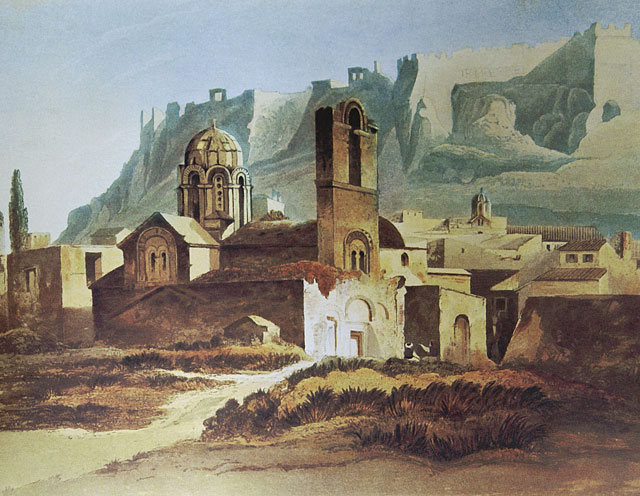
Byzantine Period (4th–15th Century CE): The Agora in Transition
The Byzantine Period marked a time of profound transformation for the Athenian Agora, as it evolved from a bustling civic and commercial hub into a quieter, more religiously focused area. This era, spanning over a millennium, saw the decline of classical institutions and the rise of Christian influence, which left a significant mark on the architectural and cultural landscape of the Agora.
During the Byzantine Period, Athens was no longer the political and cultural powerhouse it had once been in antiquity. However, it remained a small yet important city within the Byzantine Empire, known for its rich classical heritage. The Agora, once the vibrant heart of Athenian democracy and commerce, saw a shift in its role and significance. Many of its grand buildings fell into disrepair, while others were repurposed to serve the needs of a predominantly Christian population.
1. The Church of the Holy Apostles: A Testament to Early Christianity Built in the 10th century, the Church of the Holy Apostles is one of the earliest and most important Christian monuments in the Agora. It was constructed to serve the spiritual needs of the local Christian community and stands as a testament to the spread of Christianity in Athens. The church is a quintessential example of Byzantine architecture, with a cross-in-square plan, a central dome, and beautifully decorated apses. Its walls are adorned with frescoes and religious iconography, reflecting the artistic traditions of the Byzantine era. The Church of the Holy Apostles marks a significant departure from the pagan temples that once dominated the Agora. It symbolizes the Christianization of Athens and the transformation of the Agora into a religious center.
2. The Transformation of Classical Structures Many classical buildings in the Agora, such as the Stoa of Attalos and the Hephaisteion, were repurposed during the Byzantine Period. The Hephaisteion, for example, was converted into a Christian church dedicated to Saint George, which was also the reason why this building is so well preserved through the centuries. These repurposed structures often retained their classical architectural elements but were modified to accommodate Christian worship. This blending of classical and Christian architecture is evident in the retention of columns, friezes, and other classical features alongside Christian symbols and altars. The adaptation of these structures highlights the continuity of the Agora as a place of significance, even as its function and character evolved. It also reflects the broader cultural and religious shifts that were taking place in Athens during this period.
Connecting the Dots: The Agora as a Timeless Intersection of History
I think it’s remarkable how many periods of destruction and reconstruction the Agora has seen, each leaving its mark on the landscape. From the Classical Period’s grandeur to the devastation brought by invasions, and from the Roman reimagining of the space to the Byzantine transformations, the Agora has continuously adapted, reflecting the changing needs and identities of its people.
What really connects the dots for me is the Panathenaic Way. The central artery that once connected the Agora to the Acropolis, serves as a powerful symbol of historical intersection. It was along this path that the great Panathenaic Festival procession passed, a ritual that celebrated the unity of the city and its divine patron, Athena. This same path was later trodden by Roman emperors, Christian pilgrims, and Ottoman officials, each adding their own layer to the Agora’s rich tapestry.
So every time I visit the Agora, I am making the same thought: The Agora is one of the few places in the world where you can experience so many different periods of history in a single glance—from the ancient Greek temples to the Roman market stalls, from the Byzantine churches to the Ottoman-era ruins. The Agora is not just a site of ancient ruins; it is a place where the dots of history connect, offering us a profound sense of continuity.
Exploring Ancient Agora: Self-Guided and Guided Tours
The Ancient Agora offers several ways to explore, whether you prefer to go at your own pace or with a guide.
Self-Guided Tour with E-Ticket & Audio Guide
- Ancient Agora E-Ticket with Optional Audio Tour
- Explore at your own pace.
- Includes an audio guide with detailed insights.
- Learn about the Agora’s role in ancient society, architecture, and daily life.
- Ideal for flexible and independent exploration.
Guided Tours
- Path to Democracy: Acropolis & Agora Tour
- Combines visits to the Acropolis and the Agora.
- Focuses on the birth and evolution of democracy.
- Includes landmarks like the Temple of Hephaestus.
- Great for those interested in political history.
- Athens Highlights: Myths & Philosophers Private Walking Tour
- Blends mythology and philosophy with historic sites.
- Covers the Agora and other key sites in Athens.
- Offers a broad understanding of Athens’ cultural and intellectual heritage.
- Perfect for connecting the physical spaces with intellectual history.
- Acropolis, Plaka & Ancient Agora Guided Tour
- A comprehensive tour that covers the Acropolis, the charming neighborhood of Plaka, and the Ancient Agora.
- Includes detailed commentary on the historical and cultural significance of each site.
- Ideal for those who want a well-rounded understanding of ancient Athens.
- Agora and Hephaistos Temple Entrance Ticket
- Focuses on the Ancient Agora and the well-preserved Temple of Hephaistos.
- Provides in-depth information about these key historical sites.
- A great option for those specifically interested in these landmarks.
These options cater to different preferences, making the Ancient Agora accessible to all visitors.
The Ultimate Tour: Acropolis and 6 Archaeological Sites Combo Ticket
This combo ticket is your key to unlocking the philosophical landscape of Athens. With access to seven of the city’s most significant archaeological sites, including the Ancient Agora where Stoicism was born, you can explore the context in which Stoic ideas were developed and debated. The ticket’s flexibility allows you to visit these historic sites over five days, giving you the time to reflect on their significance as you move from one to the next.
What’s Included:
- Acropolis: Begin at the Acropolis, the heart of ancient Athens, and consider how the values of endurance and reason were reflected in the city’s most iconic structures.
- Ancient Agora: Walk through the Stoa Poikile, where Zeno taught, and let the philosophical origins of Stoicism resonate as you explore.
- Roman Agora and Beyond: Continue your journey through sites like the Roman Agora and the Temple of Olympian Zeus, each offering a unique glimpse into the world that shaped Stoic thought.
Frequently Asked Questions about the Ancient Agora of Athens
What was the Agora used for in ancient Athens?
The Agora served as the central public space in ancient Athens. It was the heart of political, commercial, social, and religious life, where citizens gathered to discuss politics, shop at the markets, attend religious ceremonies, and engage in philosophical debates.
How long do you need in Ancient Agora of Athens?
You typically need around 1 to 2 hours to explore the Ancient Agora, depending on your interest level in history and archaeology. This allows time to visit key sites like the Stoa of Attalos, the Temple of Hephaestus, and the museum.
How much does it cost to go to the Ancient Agora of Athens?
The entrance fee to the Ancient Agora is included in the combined ticket for the Acropolis and several other archaeological sites in Athens. Prices may vary, so it’s best to check current rates before your visit.
Is the Ancient Agora worth visiting?
Absolutely! The Ancient Agora is a must-visit for anyone interested in ancient Greek history, philosophy, and architecture. It offers a unique insight into the daily life of ancient Athenians and the foundation of Western democracy.
What is the difference between the Acropolis and the Agora?
The Acropolis is a high city that served as the religious center of ancient Athens, home to important temples like the Parthenon. The Agora, on the other hand, was the civic center, where political, social, and commercial activities took place.
How do I get into the Ancient Agora?
The main entrance to the Ancient Agora is located at Adrianou Street, near Monastiraki Square. It’s easily accessible by metro, with Monastiraki station being the closest stop.
What are some fun facts about the Agora?
- The Agora was not only a marketplace but also the birthplace of democracy, where citizens gathered to discuss and vote on public matters.
- The Stoa of Attalos, a large covered walkway, was rebuilt in the 1950s and now houses the Museum of the Ancient Agora.
- The Temple of Hephaestus in the Agora is one of the best-preserved ancient temples in Greece.

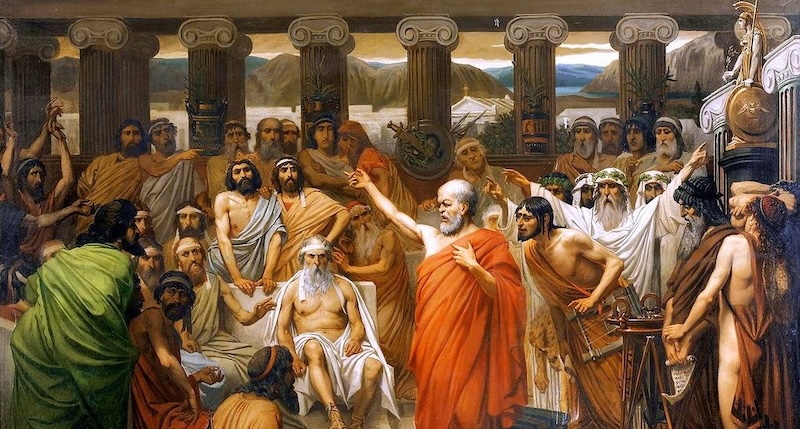
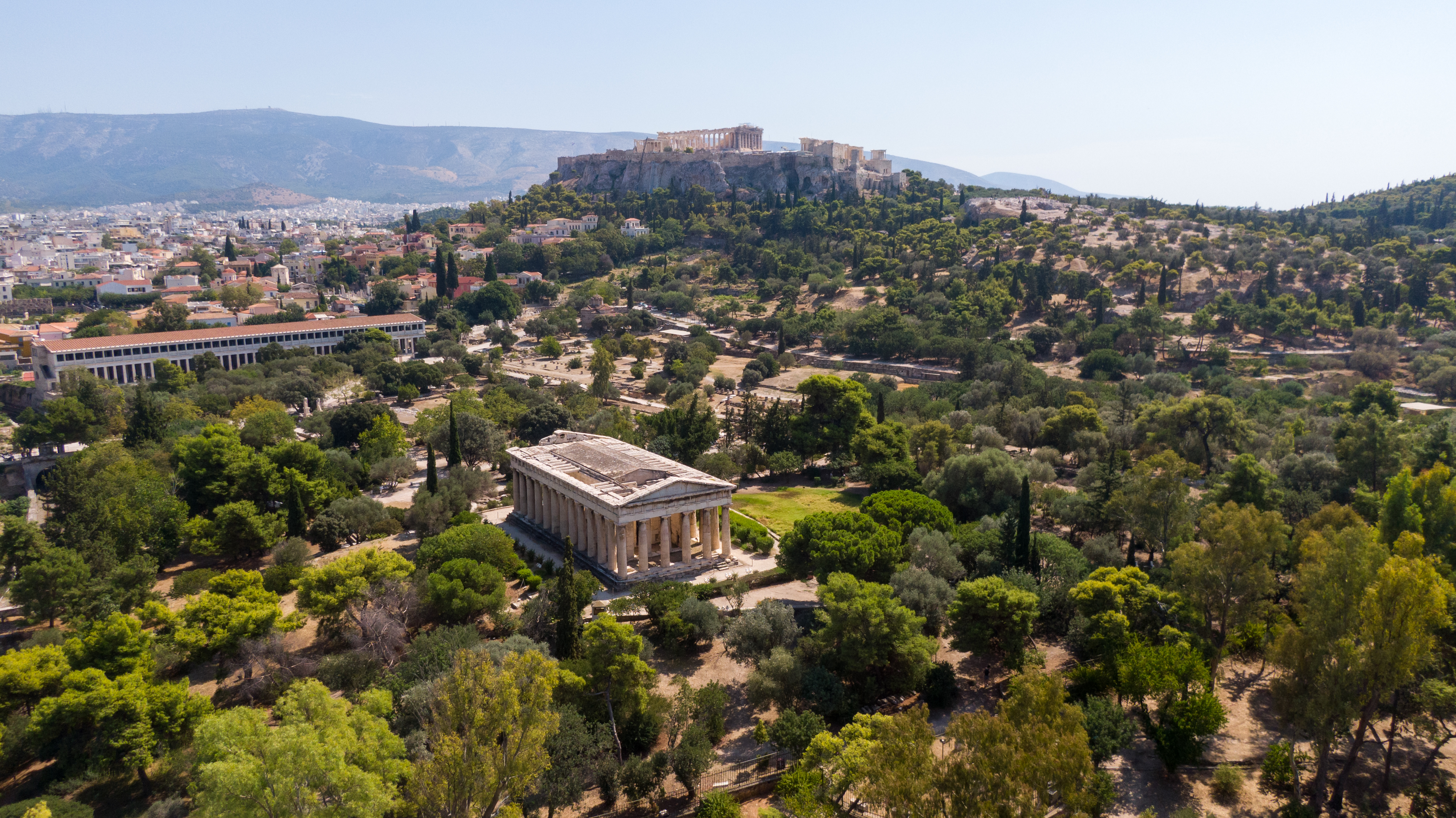
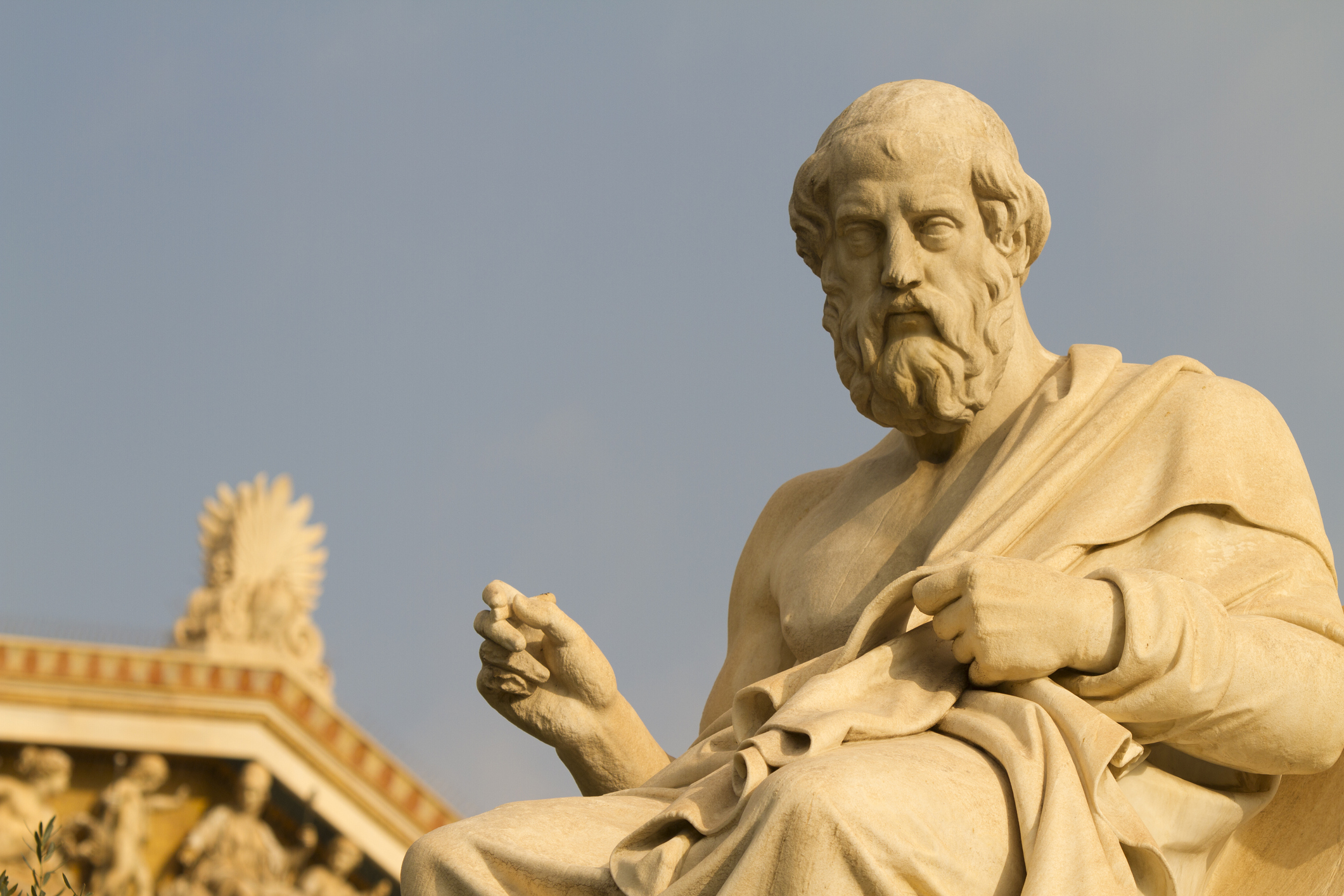
Comments